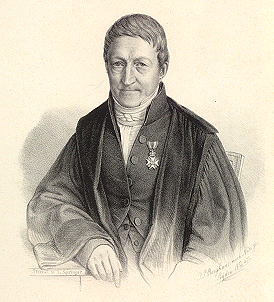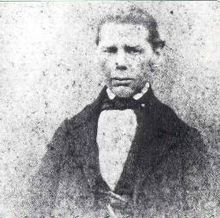
Sluis is a town and municipality located in the west of Zeelandic Flanders, in the south-western Dutch province of Zeeland.
Sranan Tongo is an English-based creole language that is spoken as a lingua franca by approximately 550,000 people in Suriname.

The Dutch Language Union is an international regulatory institution that governs issues regarding the Dutch language. It is best known for its spelling reforms which are promulgated by member states, grammar books, the Green Booklet and its support of Dutch language courses and studies worldwide. It was founded on a treaty concluded between the Netherlands and Belgium on 9 September 1980. Suriname has been an associate member of the Taalunie since 2004.

IJ is a digraph of the letters i and j. Occurring in the Dutch language, it is sometimes considered a ligature, or a letter in itself. In most fonts that have a separate character for ij, the two composing parts are not connected but are separate glyphs, which are sometimes slightly kerned.
Jersey Dutch is an archaic Dutch dialect formerly spoken in and around the counties of Bergen and Passaic in New Jersey from the late 17th century until the early 20th century. It may have been a partial creole language based on Zeelandic and West Flemish Dutch dialects with English and possibly some elements of Lenape.
Dutch orthography uses the Latin alphabet. The spelling system is issued by government decree and is compulsory for all government documentation and educational establishments.
The Woordenboek der Nederlandsche Taal is a dictionary of the Dutch language. It contains between 350,000 and 400,000 entries describing Dutch words from 1500 to 1976. The paper edition consists of 43 volumes on 49,255 pages. It is believed to be the largest dictionary in the world in number of pages. The dictionary was nearly 150 years in the making from 1849; the first volume was published in 1864, and the final volume was presented to Albert II of Belgium and Beatrix of the Netherlands in 1998.
The history of Dutch orthography covers the changes in spelling of Dutch both in the Netherlands itself and in the Dutch-speaking region of Flanders in Belgium. Up until the 18th century there was no standardization of grammar or spelling. The Latin alphabet had been used from the beginning and it was not easy to make a distinction between long and short vowels. The word jaar (year) for instance, could be spelt jar,jaer,jair, or even yaer and iaer. With the spirit of the French Revolution, attempts were made to unify Dutch spelling and grammar. Matthijs Siegenbeek, professor at Leiden was officially asked in 1801 to draw up a uniform spelling.

Dutch is a West Germanic language spoken by about 25 million people as a first language and 5 million people as a second language, constituting most of the population of the Netherlands and about 60% of the population of Belgium. It is the third most widely spoken Germanic language, after its close relatives English and German.

Matthijs Siegenbeek was a Dutch academic. From 1797 to 1847 he was the first professor of the Dutch language at the University of Leiden. From 1803 he was the member, then secretary, of the head-office of that university's literary faculty. Initially he was a Mennonite voorganger in Dokkum.
Robine Tanya van der Meer is a Dutch actress and model. She is best known as Meike Griffioen in Goede tijden, slechte tijden and for hosting the TV-show Model in 1 dag.

Van Dale's Great Dictionary of the Dutch Language, called Dikke Van Dale[ˈdɪkə vɑn ˈdaːlə] for short, is the leading dictionary of the Dutch language. The latest edition was published in April 2022.
Dutch profanity can be divided into several categories. Often, the words used in profanity by speakers of Dutch are based around various names for diseases. In many cases, these words have evolved into slang, and many euphemisms for diseases are in common use.
Van Dalen is a Dutch toponymic surname meaning "from/of Dalen", a town in the province of Drenthe. Variant spellings are "Van Daalen" and Van Daelen. The name sometimes may be a hypercorrection of the form Van Dale, with the meaning "from (the) valley". Notable people with the surname include:

Flemish (Vlaams) is a Low Franconian dialect cluster of the Dutch language. It is sometimes referred to as Flemish Dutch, Belgian Dutch, or Southern Dutch. Flemish is native to Flanders, a historical region in northern Belgium; it is spoken by Flemings, the dominant ethnic group of the region. Outside of Flanders, it is also spoken to some extent in French Flanders and the Dutch Zeelandic Flanders.

Cruijffiaans is the name given to the way of speaking, or a collection of sayings, made famous by Dutch association football player and coach Johan Cruijff (1947–2016), particularly "one-liners that hover somewhere between the brilliant and the banal". An example is "Je moet altijd zorgen dat je één doelpunt meer scoort als de tegenstander"

Pieter Steinz was a Dutch journalist, literary critic and non-fiction author. From 2012 to 2015 he was director of the Nederlands Letterenfonds.
Johan David Carel Pagenstecher was a colonial administrator who served as acting commander of the Dutch Gold Coast.
Cornelis (Cornelius) Columbanus Vrancx was a Flemish writer of prose, poetic refrains and spotlied against the Reformed. He was the 60th abbot of St Peter's Abbey in Ghent from 1597 and wrote thirty-seven concise works. Cornelis Columbanus Vrancx is seen as the forerunner of the Flemish poet Adriaan Poirters.










